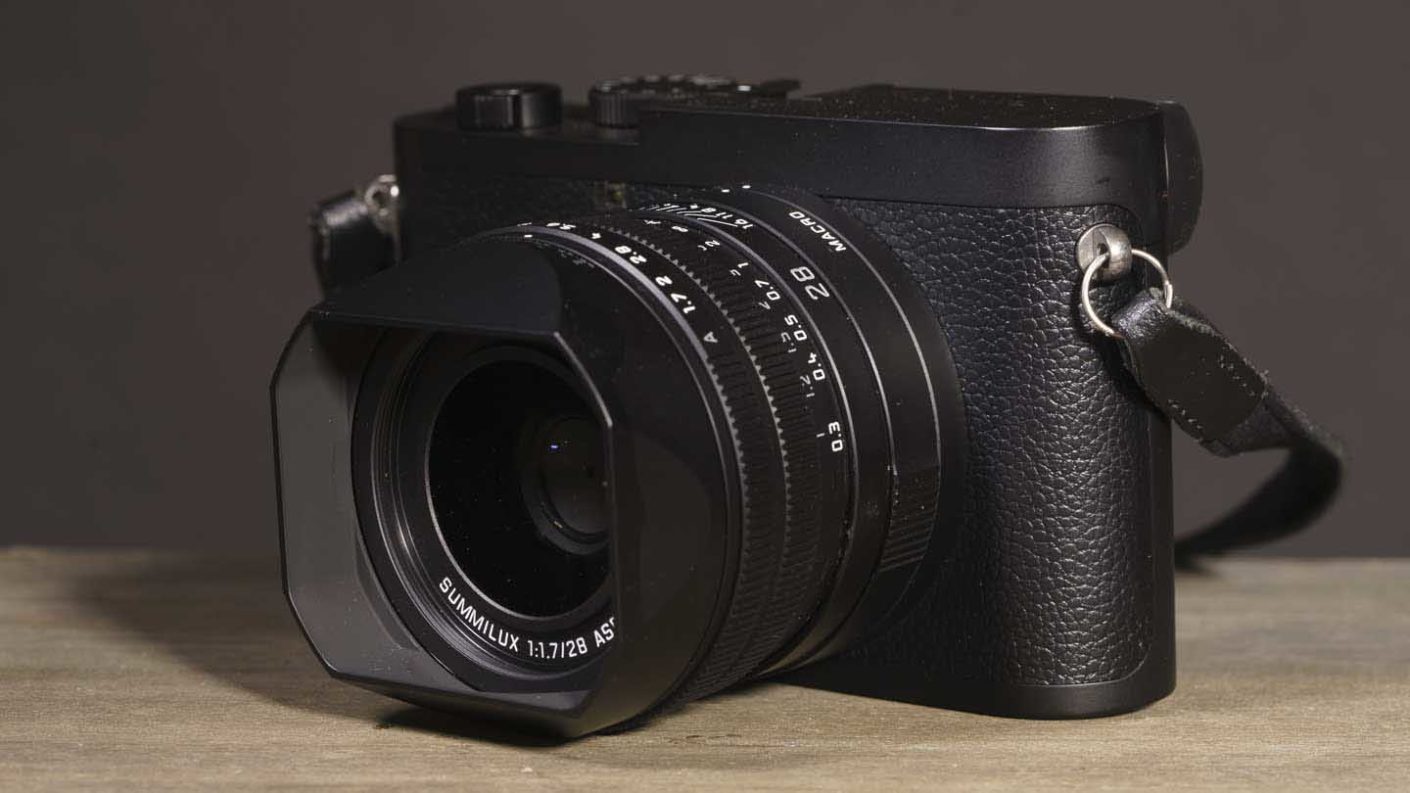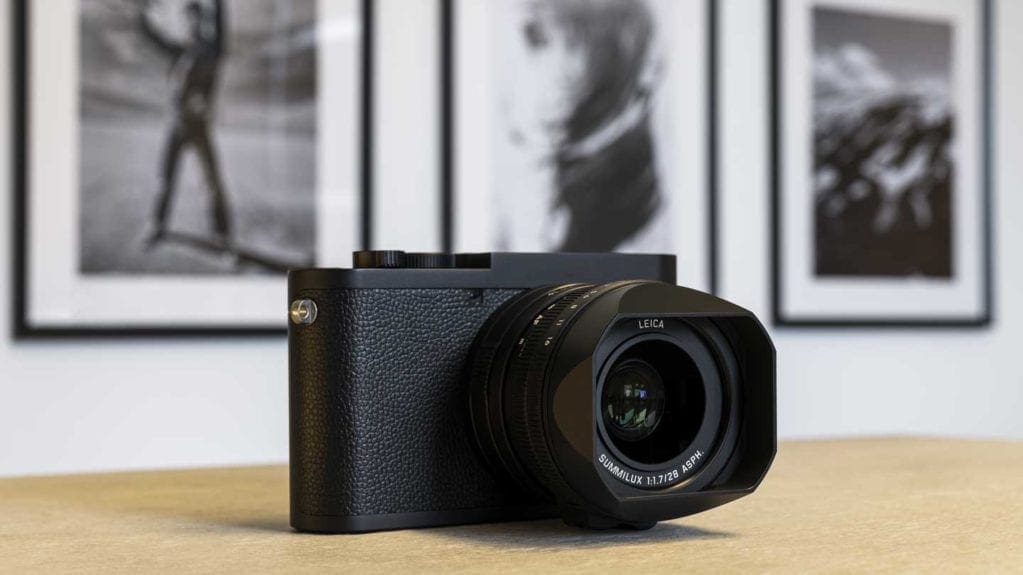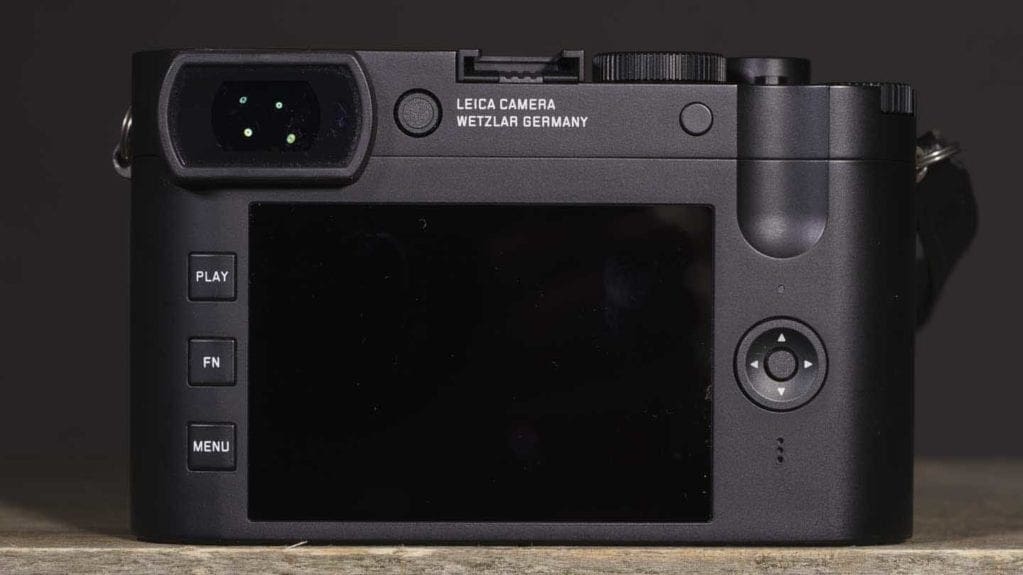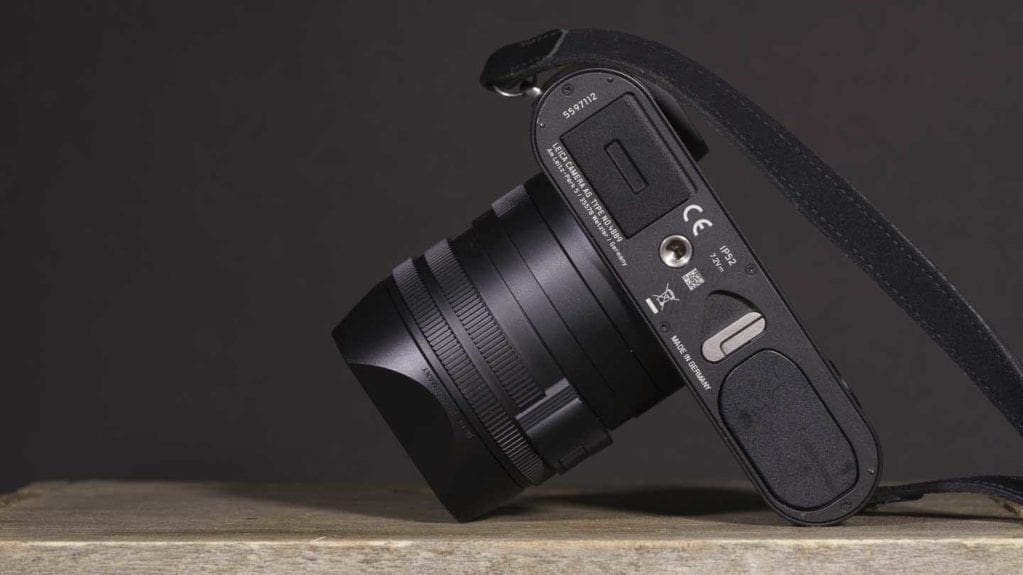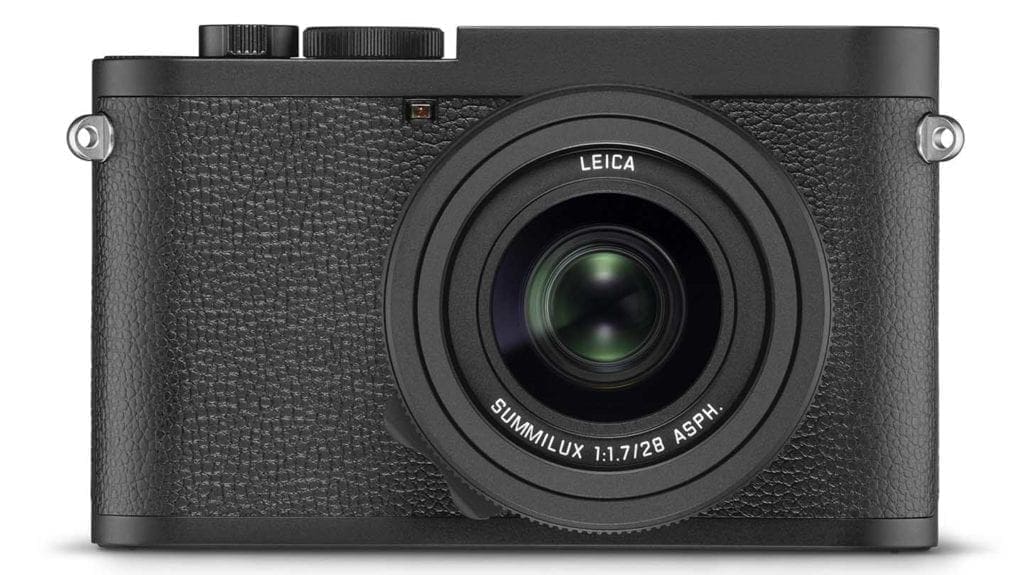Leica has given the Q2 Monochrom the same magnesium alloy body with a top plate machined from aluminium as the Q2. It’s also weatherproof to the same standard – rated at IP52.
Like the Q2, the Q2 Monchrom is a solid feeling camera, but the back only has a small indent for your thumb, which makes me nervous. Leica changed the texture of the leatherette coating on the front of the Monochrom camera but I still wouldn’t consider using it without some form of strap. To be fair, neither the Q2 nor the Q2 Monochrom slipped from my hand during testing, and I’m pretty sure they would dent the ground they fall on, but I don’t feel comfortable with the thought that one slip could see a £4,995/$5,995 camera hit the deck.
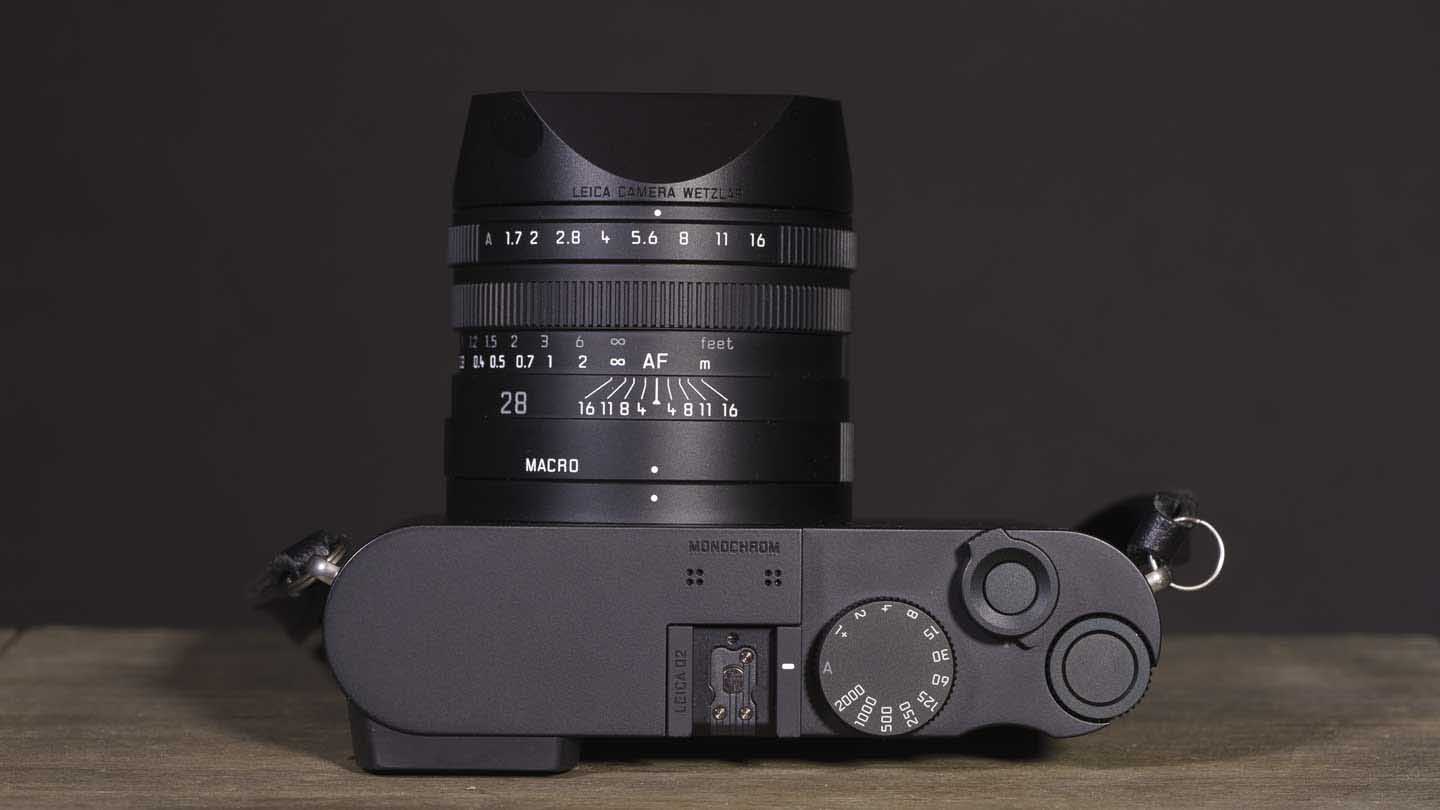
Controls
Leica doesn’t like to crowd a camera with buttons and dials, and the Q2 Monochrom has a fairly simple control arrangement that’s identical to the Q2’s and that lets you adjust the features you want quickly.
For example, the lens has three rings. The ring nearest the body switches between normal and macro focusing, reducing the minimum focus from 30cm to 17cm.
In the middle, there’s the manual focus ring which has a lock that needs to be unlocked to enable manual focusing. You switch back to autofocus by rotating the ring all the way to the furthest focusing point until it clicks.
Then towards the end of the lens is the aperture ring. Setting this to ‘A’ means that the camera is in control of the aperture. Alternatively, the ring can be set to a specific value (marked from f/1.7 to f/16).
If the shutter speed dial on the top-plate of the camera is set to ‘A’ and the aperture ring is at a specific value, the camera is in aperture priority mode and will set a shutter speed that takes the aperture and sensitivity (ISO) setting into account.
Alternatively, setting the aperture ring to ‘A’ and the shutter speed dial to a specific value puts the camera in shutter priority mode.
You can take full manual control over the exposure by setting the aperture ring and the shutter speed dial to specific values. And the camera can take control if both the aperture ring and the shutter speed dial are set to ‘A’.
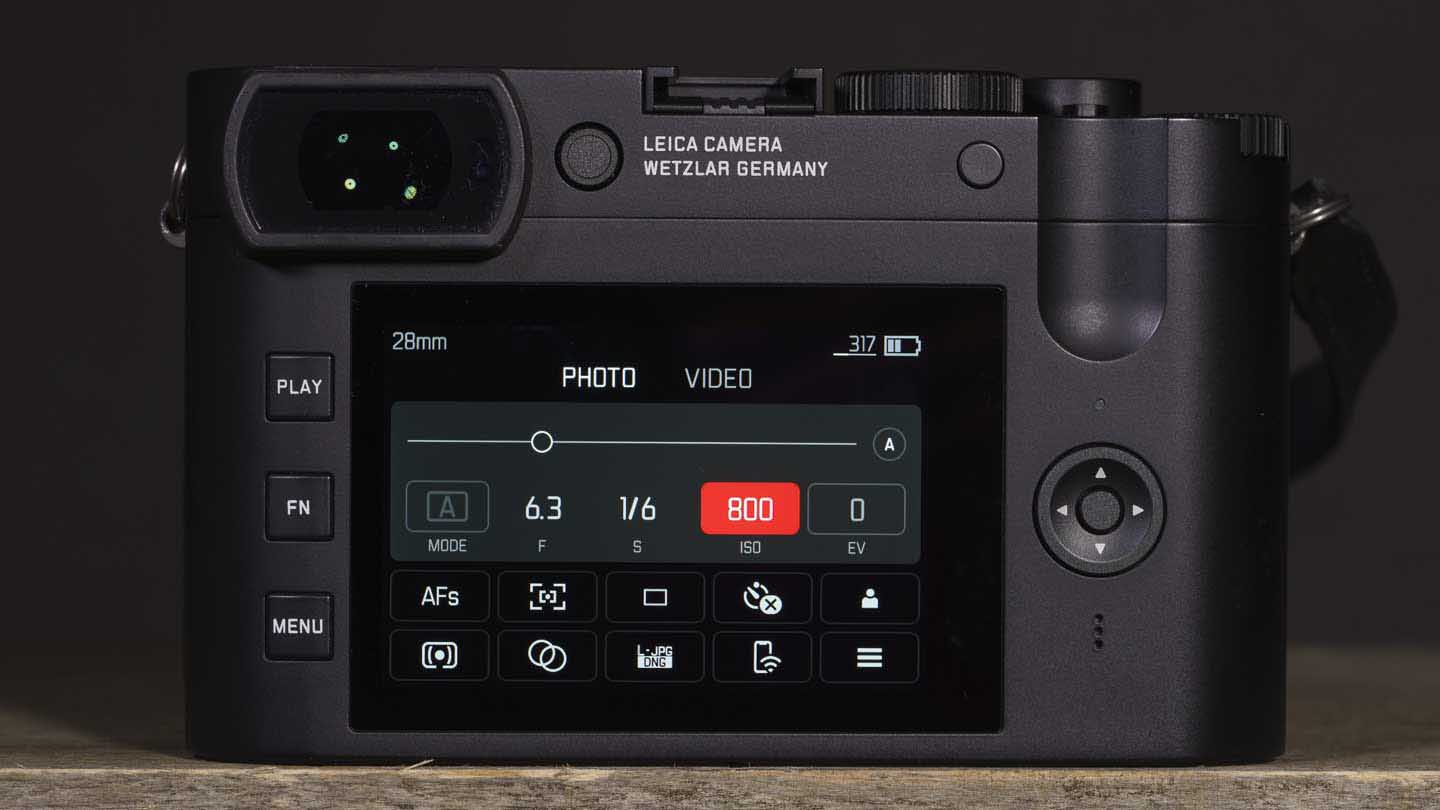
Viewfinder and Screen
Leica has used the same 3,680,000-pixel OLED electronic viewfinder (EVF) in the Q2 Monochrom as is in the Q2. In the Q2 it gives a very detailed and accurate preview of the captured images and it works very well in the Q2 Monochrom.
There’s also a fixed 3-inch 1,040,000-dot TFT touchscreen on the back of the camera. Again, this is the same unit as is on the rear of the Q2, and it shows plenty of detail but images sometimes look a bit flatter on it than when you open them on a computer.
It would be nice if the screen could be tilted. As it’s a fixed screen, it’s not a great deal of help if you want to shoot very high or low -level images. Inevitably, I found myself crawling on the ground to get low-level shots.
As I said earlier, there aren’t many controls on the Q2 Monochrom and the menu isn’t extensive, which makes a refreshing change. Pressing the menu button brings up a screen that lets you adjust the focus, metering, drive mode and self-timer, or start the smartphone connectivity. At the top of this screen, which works by touch-control, there’s the option to switch between stills and video mode with a tap.

Pressing the button again takes you to the customisable favourites menu, from here, subsequent presses of the menu takes you through the pages of the main menu. It’s a delightfully simple and intuitive system.
Read our Leica Q2 review
